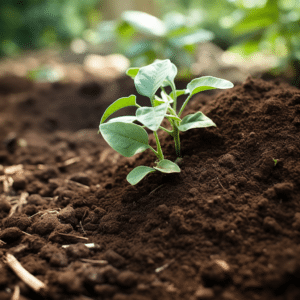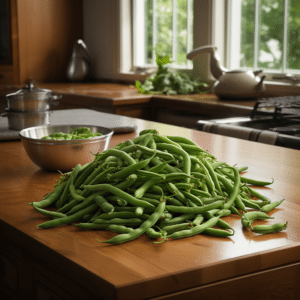Green beans, also known as string beans, are a staple in many vegetable gardens. They’re easy to grow, highly productive, and versatile in the kitchen. This guide will provide you with everything you need to know about growing green beans successfully.
Understanding Green Beans

Before we dive into the specifics of growing green beans, it’s important to understand what they are and why they’re a great addition to your garden. Green beans are the unripe, young fruit and protective pods of various cultivars of the common bean (Phaseolus vulgaris).
They are known for their tender, crisp texture and sweet flavor. Green beans are also packed with vitamins and minerals, making them a healthy addition to any diet. They are low in calories but high in dietary fiber, Vitamin A, and Vitamin C.
Varieties of Green Beans
There are two main types of green beans: bush beans and pole beans. Bush beans are compact and require no support, while pole beans grow on vines and need a trellis or other support system. Both types have their advantages and disadvantages, so choose the one that best suits your garden and personal preference.
Bush beans are generally easier to care for and mature faster, making them a good choice for beginners. Pole beans, on the other hand, produce more beans over a longer period and are often more flavorful. They also take up less ground space, making them a good choice for small gardens.
How to Grow Green Beans

Now that you have a basic understanding of green beans, let’s get into the specifics of growing them. Green beans are warm-season crops, which means they should be planted after the last frost in spring when the soil has warmed.
They prefer full sun and well-drained soil with a pH between 6.0 and 6.8. Green beans are also legumes, which means they can fix nitrogen in the soil, making them a great crop for improving soil fertility.
Planting Green Beans
Start by preparing your garden bed. Remove any weeds or rocks and loosen the soil with a garden fork or tiller. If you’re planting bush beans, space the seeds about 1-2 inches apart in rows 2-3 feet apart. For pole beans, plant the seeds 3-4 inches apart in rows 3-4 feet apart.
Plant the seeds 1-1.5 inches deep and water them well. You should see sprouts in about one to two weeks. If you’re growing pole beans, install your trellis or other support system at the time of planting to avoid damaging the plants later.
Caring for Green Beans
Once your green beans are planted, they require minimal care. Water them regularly, especially during dry spells, but avoid getting the leaves wet to prevent disease. Mulch around the plants to conserve moisture and suppress weeds.
Green beans don’t usually require fertilization, thanks to their ability to fix nitrogen in the soil. However, if your soil is poor, you may want to add a balanced organic fertilizer at planting time.
Harvesting and Storing Green Beans

Green beans are ready to harvest when they’re about the size of a small pencil. They should be firm and crisp, and you should be able to snap them easily. Be sure to pick your beans regularly to encourage more production. If you leave mature beans on the plant, it will stop producing new ones.
To store green beans, you can keep them in the refrigerator for about a week. For longer storage, you can blanch and freeze them, or pickle them. You can also dry them and use them as dried beans.
Common Problems and Solutions
Like any garden crop, green beans can be affected by pests and diseases. Common pests include aphids, bean beetles, and slugs. You can control these pests by handpicking them off the plants, using organic pesticides, or encouraging beneficial insects.
Common diseases include bacterial blight, powdery mildew, and rust. To prevent these diseases, avoid getting the leaves wet when watering, rotate your crops, and clean up plant debris at the end of the season.
With proper care and attention, you can enjoy a bountiful harvest of green beans from your garden. Whether you’re a beginner or an experienced gardener, green beans are a rewarding crop to grow.